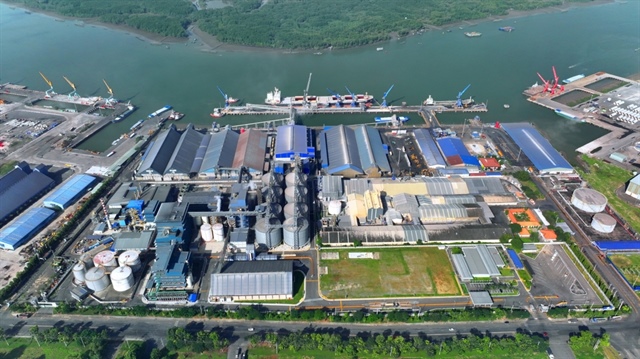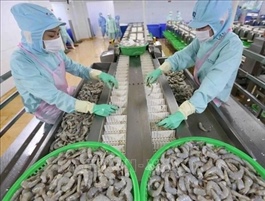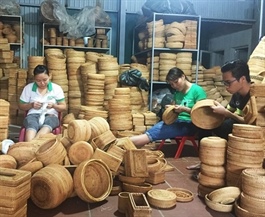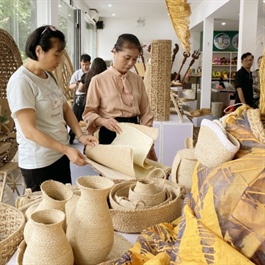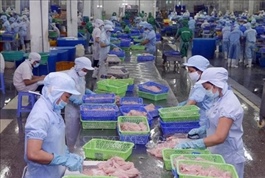Vietnamese fruits poised for growth in Northeast Asian markets
Vietnamese fruits poised for growth in Northeast Asian markets
Many kinds of Vietnamese fruits are increasingly gaining access to the Northeast Asian market, contributing to fulfilling the 2024 goal of US$7 billion in export value of fruit and vegetables.
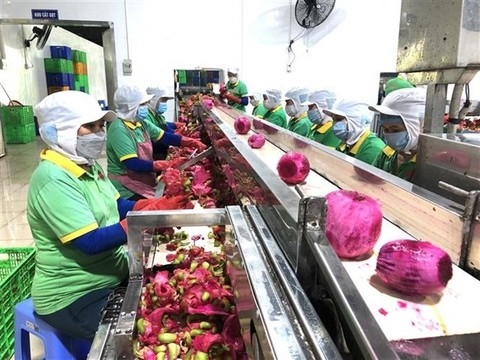
Workers processing dragon fruits for export at a plant in Đồng Nai Province. — VNA/VNS Photo |
According to Đặng Phúc Nguyên, Secretary General of the Việt Nam Fruit and Vegetable Association, as of the end of July, the export of fruit and vegetables had earned $3.8 billion, with durian alone accounting for 40 per cent of the total.
This success is attributed to the implementation of Free Trade Agreements (FTAs) that have opened market and reduced tariffs for Vietnamese agricultural products.
Notably, in addition to China, markets in the Republic of Korea (RoK) and Japan have seen remarkable growth, making up 80 per cent of the total value of Vietnamese fruit and vegetable exports.
Nguyên said that China, with its large population and high demand for fruits and vegetables, remains a traditional market for many Vietnamese fruits.
Meanwhile, Japan and the RoK are also populous countries with high incomes and high demand for quality agricultural products, and members of the Regional Comprehensive Economic Partnership (RCEP).
Therefore, Việt Nam's exports to the two markets enjoy benefits from reduced tariffs and lower transport and logistics costs thanks to geographic distance, resulting in the quality of farm produce maintained.
According to Lương Ngọc Quang from the Plant Protection Department, under the Ministry of Agriculture and Rural Development, under the RCEP, China has allowed the import of 12 Vietnamese agricultural products, including dragon fruit, longan, lychee, mango and durian, among others.
Japan has permitted dragon fruit, mango, lychee, and longan from Việt Nam to its market, while the RoK has recently granted permission for fresh grapefruit from Việt Nam.
Quang emphasised that gaining market access for a product will open opportunities to increase export turnover and affirm the position of Vietnamese agricultural products. However, negotiations for market opening are complicated and time-consuming, with some talks taking three to five years or longer.
Once access is granted, compliance with the importing country’s standards is crucial to avoid disruptions. A single violation by a producer or a shipment could affect the entire industry, leading to warnings or suspension of exports.
Nguyễn Thành Hiếu, Deputy Director of the Southern Fruit Research Institute, said that Vietnamese fruits are becoming more diverse with high quality, gaining popularity in various markets.
Following a period of international integration, most exporters have updated their knowledge of market regulations on food safety and plant quarantine.
However, farmers, as the starting point of the agricultural value chain, often lack sources to keep up with regulatory changes.
Therefore, it is essential for regulatory bodies, local authorities, and businesses to support farmers in improving their production standards, packaging and branding, thereby enhancing the reputation of Vietnamese fruits on the global market.





